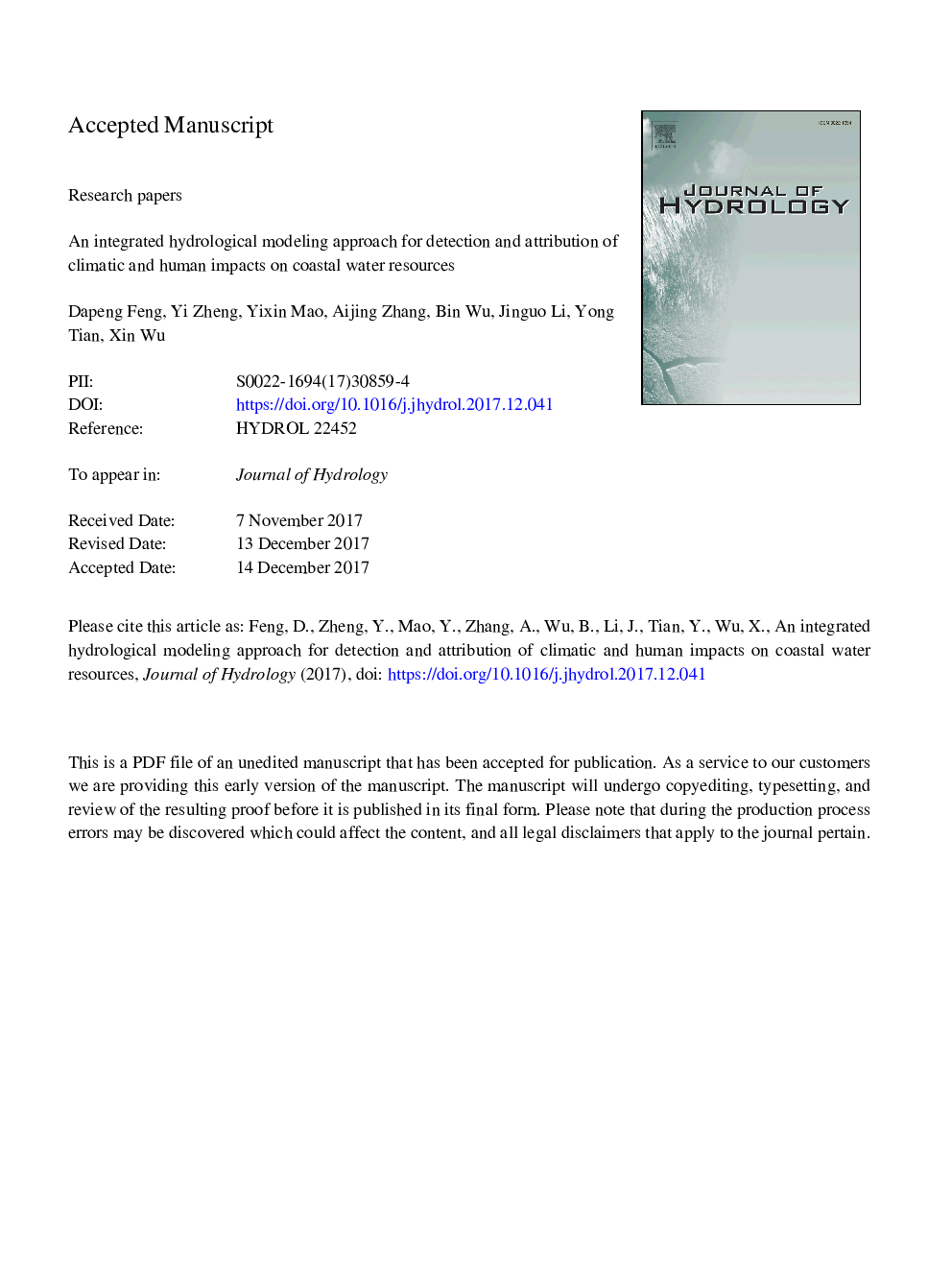| کد مقاله | کد نشریه | سال انتشار | مقاله انگلیسی | نسخه تمام متن |
|---|---|---|---|---|
| 8895020 | 1629897 | 2018 | 75 صفحه PDF | دانلود رایگان |
عنوان انگلیسی مقاله ISI
An integrated hydrological modeling approach for detection and attribution of climatic and human impacts on coastal water resources
ترجمه فارسی عنوان
یک روش مدل سازی هیدرولوژیکی برای شناسایی و شناسایی اثرات آب و هوا و انسان در منابع آب
دانلود مقاله + سفارش ترجمه
دانلود مقاله ISI انگلیسی
رایگان برای ایرانیان
کلمات کلیدی
تغییر آب و هوا، فعالیت های انسانی، مدل سازی یکپارچه سطح آب زیرزمینی، منطقه ساحلی، منابع آبی، آب های زیرزمینی،
موضوعات مرتبط
مهندسی و علوم پایه
علوم زمین و سیارات
فرآیندهای سطح زمین
چکیده انگلیسی
Water resources in coastal areas can be profoundly influenced by both climate change and human activities. These climatic and human impacts are usually intertwined and difficult to isolate. This study developed an integrated model-based approach for detection and attribution of climatic and human impacts and applied this approach to the Luanhe Plain, a typical coastal area in northern China. An integrated surface water-groundwater model was developed for the study area using GSFLOW (coupled groundwater and surface-water flow). Model calibration and validation were performed for background years between 1975 and 2000. The variation in water resources between the 1980s and 1990s was then quantitatively attributed to climate variability, groundwater pumping and changes in upstream inflow. Climate scenarios for future years (2075-2100) were also developed by downscaling the projections in CMIP5. Potential water resource responses to climate change, as well as their uncertainty, were then investigated through integrated modeling. The study results demonstrated the feasibility and value of the integrated modeling-based analysis for water resource management in areas with complex surface water-groundwater interaction. Specific findings for the Luanhe Plain included the following: (1) During the historical period, upstream inflow had the most significant impact on river outflow to the sea, followed by climate variability, whereas groundwater pumping was the least influential. (2) The increase in groundwater pumping had a dominant influence on the decline in groundwater change, followed by climate variability. (3) Synergetic and counteractive effects among different impacting factors, while identified, were not significant, which implied that the interaction among different factors was not very strong in this case. (4) It is highly probable that future climate change will accelerate groundwater depletion in the study area, implying that strict regulations for groundwater pumping are imperative for adaptation.
ناشر
Database: Elsevier - ScienceDirect (ساینس دایرکت)
Journal: Journal of Hydrology - Volume 557, February 2018, Pages 305-320
Journal: Journal of Hydrology - Volume 557, February 2018, Pages 305-320
نویسندگان
Dapeng Feng, Yi Zheng, Yixin Mao, Aijing Zhang, Bin Wu, Jinguo Li, Yong Tian, Xin Wu,
